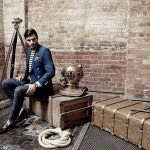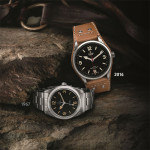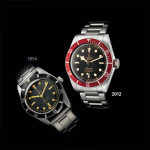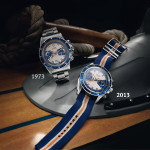Woven in a traditional style in Eastern France, Tudor’s fabric straps has become one of the brand’s characteristic features, adding an extra touch of style to the wearer’s wrist.
The origin of the use of fabric straps can be traced back to the military. In the early 70s, NATO standardised the use of nylon thread-through watch straps. Since 2010, Tudor has offered an additional fabric strap for all its models in the Heritage line. Woven in a traditional style in Eastern France, it has become one of the brand’s characteristic features, adding an extra touch of style to the wearer’s wrist.
In 2009, while most of the Swiss luxury watch brands were not yet aware of the fabric strap or did not consider it worthy of the level of sophistication of their products, the fabric strap, which had already gained popularity within the intimate circles of collectors of sporting watches, found in Tudor an ideal environment for its further interpretation. Tudor recognised the stylistic potential of such an accessory and, in line with its pursuit of perfection, had its own version manufactured.
Economical and not very comfortable but sporty and easy to change, from the year 2000 onwards the fabric strap saw a resurgence of interest amongst keen watch collectors. Once Tudor decided to become involved, it completely reassessed the design and made it adjustable in length, taking its inspiration from the seat belt system of vintage sports cars. It then found a solution for incorporating “tunnels” in which the strap bars of the watch could be inserted in order to keep the latter fixed firmly in place. Finally, Tudor approached a well-established traditional passementerie company, one of the very few remaining in France still practising the technique of “Jacquard” weaving, thanks to which the room for experimental manoeuvre, in terms of the complexity of the motifs, is practically limitless. The “Jacquard” also has the added advantage of producing a dense weave with a high thread count which ensures the sturdiness and flexibility of the straps made using this technique.
Read more...




















You must be logged in to post a comment.